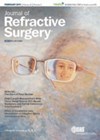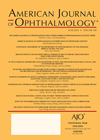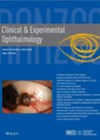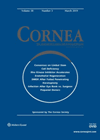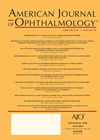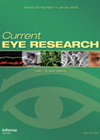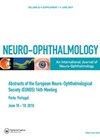
Journal Reviews archive for August 2019
Aberration measurements with manual or FLA cataract surgery
This study group compared the higher order aberrations (HOAs) between femtosecond laser-assisted cataract surgery (FLACS) and manual cataract surgery. Consecutive patients undergoing FLACS or manual cataract surgery with implantation of an intraocular lens from January 2017 to February 2018 were...
Management of restrictive diplopia after ptergium surgery
This single centre retrospective case series included 15 patients with restrictive diplopia after ptergium excision. The mean time from surgery to diplopia was six months and all patients had a moderate limitation of abduction in the operated eye causing an...
Association of dry eye symptoms in patients with dyslipidaemia and statin use
This retrospective analysis of the Blue Mountains Eye Study III cohort (Caucasian Australians residing west of Sydney n=1680; mean age >74 years, range 60-97) analysed the association between dyslipidaemia, use of oral statins and symptoms of dry disease (DED) among...
Can closing the eyelid during riboflavin induction phase of crosslinking increase corneal thickness?
Corneal crosslinking (CXL) with riboflavin and UVA irradiation is the standard treatment for preventing progression of keratoconus. Thinning of the cornea during the riboflavin loading phase was reported in previous studies which used riboflavin with dextran. A minimum stromal thickness...
Comparing femtosecond laser assisted-DMEK to manual DMEK
Femtosecond laser is as a novel tool for performing precise descemetorhexis in descemet membrane endothelial keratoplasty (DMEK) surgery. In DMEK surgery, the recipient’s Descemet membrane is peeled to allow adherence of the donor DMEK tissue to the recipient’s stroma. Complete...
Ocular manifestation of Marfan Syndrome
This repeated cross-sectional study collected data in 2003-2004 and 2014-2015 to investigate changes in ocular features in Marfan syndrome (MFS) fulfilling the Ghent-2 criteria. Ghent-2 is a set of criteria by which MFS are identified and includes aortic root aneurysm...
How are pigment dispersion syndrome and pigmentary glaucoma inherited?
This single centre prospective, cross-sectional study assessed the relatives of patients with pigment dispersion syndrome (PDS) and pigmentary glaucoma (PG) to determine the heritability of these conditions over an 11 month period. One hundred and one unrelated patients with PDS...
Lens surgery in patients with lens subluxation misdiagnosed as primary angle-closure glaucoma
Lens subluxation can be caused by many conditions including Marfan syndrome and other hereditary conditions, and blunt trauma. Lens displacement can cause pupillary block and angle closure. This is commonly misdiagnosed as primary angle closure glaucoma (PACG), which can lead...
Glaucoma and capillary perfusion
Elevated IOP is important but not the sole factor responsible for retinal ganglion cell (RGC) death and optic nerve damage in glaucoma. There is increasing evidence that visual loss correlates with macular inner retinal thinning. A total of 148 eyes...
Recognising clinical characteristics of blepharospasm
Focal dystonia is regarded as a characteristic feature of blepharospasm, but patients do not always present with these motor symptoms. The authors present a retrospective analysis of data from a large number of patients treated for drug-induced or essential blepharospasm...
Using graphical illustration to predict giant cell arteritis
A nomogram is a chart or graph of scaled variables that facilitates the approximate computation of a mathematical function via intersecting lines. The objective of this study was to illustrate the use of a nomogram for the prediction of giant...
Investigation of blood platelet parameters in anterior ischaemic optic neuropathy
The aim of this clinical retrospective comparative study was to assess the possible relationship between arteritic anterior ischaemic optic neuropathy (AAION) and non-arteritic anterior ischaemic optic neuropathy (NAION) with blood platelet parameters and neutrophil-to-lymphocyte ratio (NLR). The medical records of...

